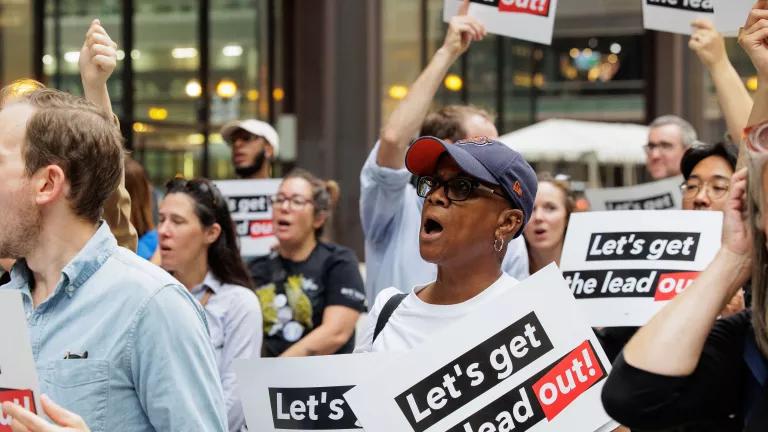Fresh Water Through Lead Pipes
Though Chicago is known as "the Fresh Coast," for some Chicagoans, the water that flows through their pipes doesn't have the same reputation.

Lake Michigan
Daniel X. O'Neil via Flickr, CC BY 4.0
The city of Chicago’s water department is finally replacing the lead service line that brings water to my mom’s home. She described the experience as disheartening and extremely difficult, but after months of trying, getting all the documents together and traveling to city hall, the dangerous lead pipe that is contaminating her drinking water—the same type of pipe that more than 400,000 Chicagoans also have—will be replaced.
I will continue to update my blog as the lead service line is replaced, including some photos and videos of the process and some expert voices talking about why we need to urgently address this health crisis in Chicago.
For many residents, the fear of lead poisoning has been a part of their lives for as long as they can remember. This is the case for my family members, who grew up in a more than 100-year-old house with lead service lines. From the age of five, my parents made it clear that drinking water from the tap was not a good idea, and so began the routine of buying cases of bottled water and making everything from coffee to soup with it.
The situation in Chicago is dire, and our leaders are not taking it seriously enough. Instead of taking action to get the lead pipes out of the ground, Chicago is spending money on a marketing campaign called Chicagwa to convince everyone that the water is safe.
Chicago is home to nearly 400,000 lead service lines, more than any other U.S. city. This is a major cause for concern, especially for parents with young children. Lead can cause irreparable damage, especially to the growing minds of children. Despite the city's promises to replace lead service lines and even introducing a lead service line replacement program for low-income residents, little progress has been made. In fact, Chicago has replaced fewer than 100 of its nearly 400,000 lead pipes.
Thanks to President Joe Biden's federal infrastructure bill, more than $100 million has been allocated for Illinois. However, Chicago is not taking advantage of this opportunity. While the Illinois legislature passed the Lead Service Line Replacement and Notification Act, a bill mandating the replacement of all lead services lines in the state, Chicago is still lagging behind in its efforts to address this public health crisis.
I live in the Southeast Side, which is dominated by industrial facilities, and residents here are not only concerned about the toxic air they breathe but also the toxic water they have to avoid. Buying bottled water is only a temporary solution to a public health crisis that has a real solution in sight: removing lead service lines from the ground.
It's time for Chicago to take action and prioritize the health of its residents over marketing campaigns and bureaucracy. Chicagwa may not be going through the same lead straws as the tap water, but for those who are aware of the problem with their water, buying bottled water is not a solution. It's time for the city to step up and do the right thing.




